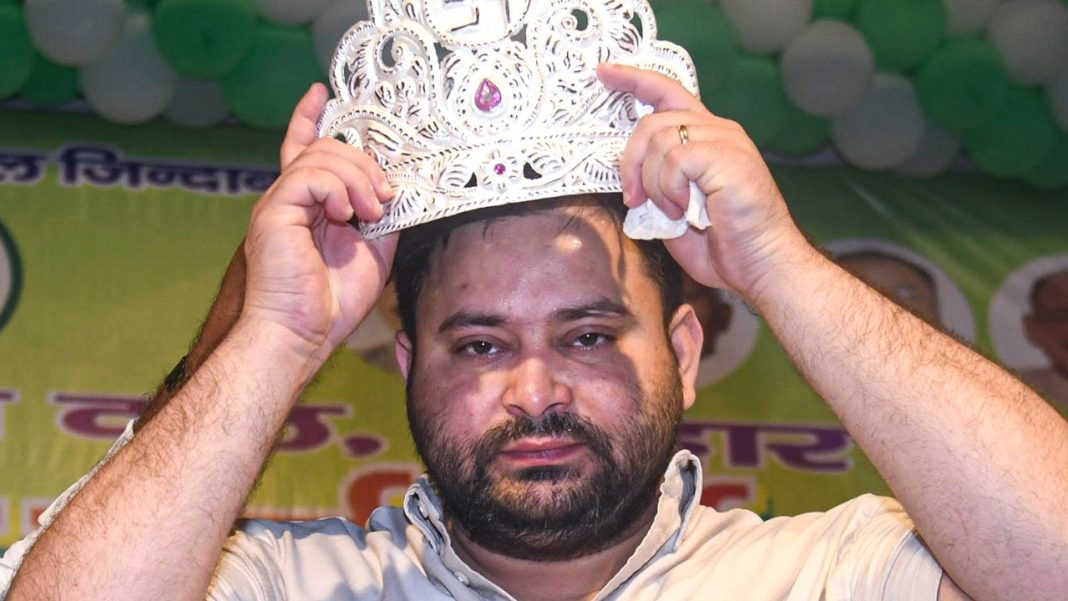The Bihar assembly elections of 2020 delivered a verdict that, on the surface, saw the National Democratic Alliance (NDA) return to power with a slender majority, ushering in Nitish Kumar for another term as Chief Minister. However, beneath the layer of seat counts, a compelling narrative emerged, highlighting a nuanced mandate from the electorate. The Rashtriya Janata Dal (RJD), led by the dynamic Tejashwi Yadav, garnered a larger individual vote share than both the Bharatiya Janata Party (BJP) and Janata Dal (United) combined, a fact that has significant implications for Bihar’s political landscape.
The Vote Share Paradox: A Deeper Look at the Mandate
While the NDA secured 125 seats against the Mahagathbandhan’s (Grand Alliance) 110 in the 243-member assembly, the raw numbers behind the popular vote told a different story. The Election Commission of India data revealed that Tejashwi Yadav’s RJD, contesting on its own symbol, secured an impressive 23.10% of the total votes polled. In contrast, the BJP, the larger partner in the NDA, managed 19.46%, and Nitish Kumar’s JD(U) secured 15.39%. This translates to the RJD alone having a vote share greater than the combined share of the BJP and JD(U) (19.46% + 15.39% = 34.85% for NDA’s two main parties vs. 23.10% for RJD, but the critical observation is Tejashwi’s RJD alone, as a single entity, significantly outperforming individual components of NDA, particularly the JD(U)).
More broadly, the Mahagathbandhan, comprising RJD, Congress, and Left parties, collectively secured 37.26% of the vote share. The NDA, with its constituents including BJP, JD(U), HAM, and VIP, garnered 37.28%. The minuscule difference of 0.02% between the two alliances underscores just how closely contested the election was, despite the final seat tally favoring the NDA. This divergence between vote share and seat share is a common characteristic of India’s First-Past-The-Post electoral system, where the distribution of votes across constituencies, rather than just the aggregate total, determines the outcome.
Tejashwi Yadav’s Resurgence and Campaign Prowess
The substantial vote share for the RJD under Tejashwi Yadav is a testament to his successful campaign, which managed to capture the public imagination, particularly among the youth. Shedding the shadow of his father, Lalu Prasad Yadav, Tejashwi meticulously crafted a campaign around pressing issues like unemployment, poverty, and migration. His promise of “10 lakh jobs” resonated deeply with a state grappling with economic challenges and a large young population seeking opportunities.
Throughout the campaign, Tejashwi conducted a relentless series of rallies, often drawing massive crowds, which observers noted were indicative of a groundswell of support. He managed to steer the narrative away from traditional caste-based politics to a more developmental agenda, positioning himself as a leader focused on the future of Bihar. This approach not only consolidated his traditional support base but also attracted disillusioned voters from other sections of society.
“Tejashwi Yadav’s performance in the Bihar elections was a remarkable display of political resilience and strategic campaigning,” observes Dr. Aruna Singh, a political analyst based in Patna. “Despite not forming the government, the RJD’s significant vote share represents a moral victory for him and signals a clear mandate for change from a large segment of the electorate. This is a message that the new government cannot afford to ignore in the long run.”
Implications for Bihar’s Political Future
The strong performance by the RJD, particularly its individual vote share, positions Tejashwi Yadav as a formidable opposition leader and a potent force in Bihar politics for years to come. It indicates a clear shift in public sentiment, suggesting a significant portion of the electorate was ready for a change in leadership and governance. While the NDA ultimately secured power, the razor-thin margin in overall vote share, coupled with the RJD’s individual strength, suggests their victory was not a resounding endorsement of the status quo.
This outcome will likely put immense pressure on the Nitish Kumar-led government to address the core issues raised by the Mahagathbandhan during the elections. The RJD, armed with a strong popular mandate, will undoubtedly hold the government accountable, leveraging its substantial support base to challenge policies and advocate for its agenda. Furthermore, this election has firmly established Tejashwi Yadav as a mature and capable leader, ready to lead his party and potentially the state in future electoral battles.
The Bihar elections of 2020, therefore, were more than just a contest of seats; they were a profound reflection of the shifting aspirations of the Bihari populace. The impressive vote share secured by Tejashwi Yadav’s RJD, surpassing that of the BJP and JD(U) individually, underscores the emergence of a powerful new political dynamic in the state, one that promises continued engagement and competition in the years ahead.




